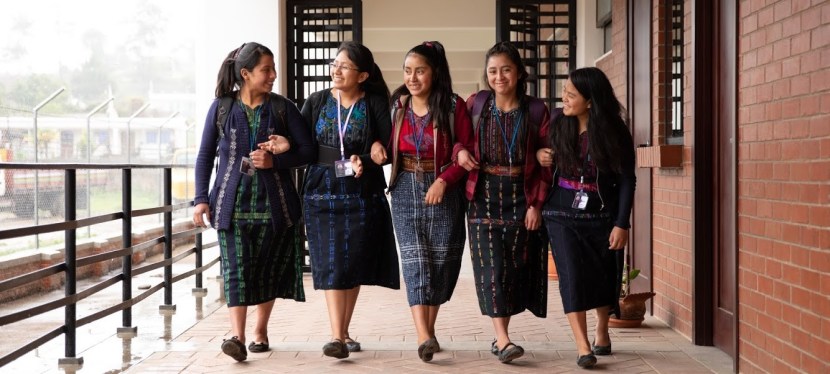Independence and self-reliance are two of the most prized American values. We are raised in a culture where individualism is paramount. From an early age we are told stories about how anything is possible if you work hard enough. We are brought up on images of settlers coming to this country seeking freedom from the hierarchy of European society, and then of pioneers bravely striking out for new territories in the west in search of the American Dream.
One is left with the impression that success, then as now, is all bootstraps and determination, and that opportunity is equitably available to all. Facebook and Instagram reflect only the polished finished product. Magazine and newspaper articles tell tales of overnight success stories that seemingly truly happen overnight. In reality, overnight success is often many years in the making. What “got you there” doesn’t make for pretty pictures. The seemingly easy wins, the quick pivot and big idea that gains traction, the rags to riches are built on a lifetime of relationship and skill building.
Working hard matters. But, when you dig deeper into success stories, there is also usually someone in the wings – a mentor, a teacher, a parent, someone or an accumulation of someones – providing guidance and support along the way. The notion of instant success in a complete vacuum is folklore. Is there opportunity to be found by people of all stripes and backgrounds in the U.S.? Absolutely. Do some have advantages over others in the pursuit of these opportunities? 100%.
I’ve been reflecting recently on the enduring impact and importance of a good education. Education creates a solid foundation, a springboard that expands one’s options and from which to make choices in the future. There is incredible privilege that comes with that, from literacy and critical thinking skills that enhance one’s basic ability to function in the world, to the confidence to handle new situations, to a broad professional network and understanding of professional norms. As a child, my siblings and I were given the space, the support, and our parents’ disciplined example when it came to pursuing our studies with vigor and without distraction. Going to college wasn’t a question; it was a priority. I wasn’t aware at the time of the enormous and enduring gift I was being given. Only now do I realize more fully how the core fundamentals of my education – literacy and grammar, critical thinking and data analysis, clean writing, and a challenging of one’s preconceptions – inform who I am and what I am capable of today.
In this context, I think about the MAIA Impact School in Guatemala and how education is poised to change the trajectory of the girl pioneers’ lives. Notably, part of the curriculum at the Impact School includes mentorship. Mentorship bridges the gap between the students’ family and cultural history and a new future of expanded possibility. Working hard and the means to afford an education are obviously critical pieces. But so is having a support system in place to help navigate unfamiliar terrain.
In the United States, the opportunity to attend school exists more broadly for all. Education through high school is both a right and a requirement, though educational opportunity and outcomes are widely variable and often influenced by geography and wealth. The leap to college for low-income and first-generation college students is vast. In some ways, because of the traditional values we are raised on that espouse hard work, independence, and self-reliance, the gap is even wider because it isn’t acknowledged, as though the unique struggles of first-time college-bound students don’t or shouldn’t exist.
Working hard and financial means are only two components of successful outcomes. To pretend otherwise is to be disingenuous about one’s own experience. For students who are trying to break the mold, to chart a new course, the demands are even more rigorous and the reality more isolating. The notion that working harder will remove all barriers is a myth. The Anaya Tipnis Scholarship Fund recognized that, “a high percentage of [low-income and first-generation] students drop out of college for reasons other than solely financial, from lacking a familial support system to an adverse academic environment. While many organizations help high school students secure college admissions, almost none provide vital mentorship for transitioning to and succeeding in higher education.” They have made it their mission to help first-time college students by closing both these financial and mentorship gaps. In partnership with Upper Bound, Upper Bound Math and Science, TRIO, and Urban Scholars, the Anaya Tipnis Scholarship Fund offers:
● Cash awards of $3,000 to each accepted student;
● One-on-one mentorships tailored to each student’s individual needs;
● Internship opportunities at local institutions and/or organizations.
The award recipients for 2018/19 and 2019/20 are shown in the following picture. You can read more about their individual stories here!

This is hope in action. This fund honors Anaya and her life wish. It bridges the gap to achieving the American Dream for hard-working and driven scholars, attempting to level the playing field by creating more equitable access to, and outcomes in, higher education. I’ve said it before and I’ll say it again – Community and Connections Count. That concept may not be as prized or acknowledged as some traditional American values, but it is a more genuine and real one. No one truly goes it alone. And no one should have to.
The Scholarship Fund’s Annual event and award ceremony will take place this year on August 20, 2019, in Needham, Massachusetts. If you are interested in attending or contributing, RSVP through their website at: https://anayafoundation.org/index.php/events
Congratulations and good luck, scholars!!!
























